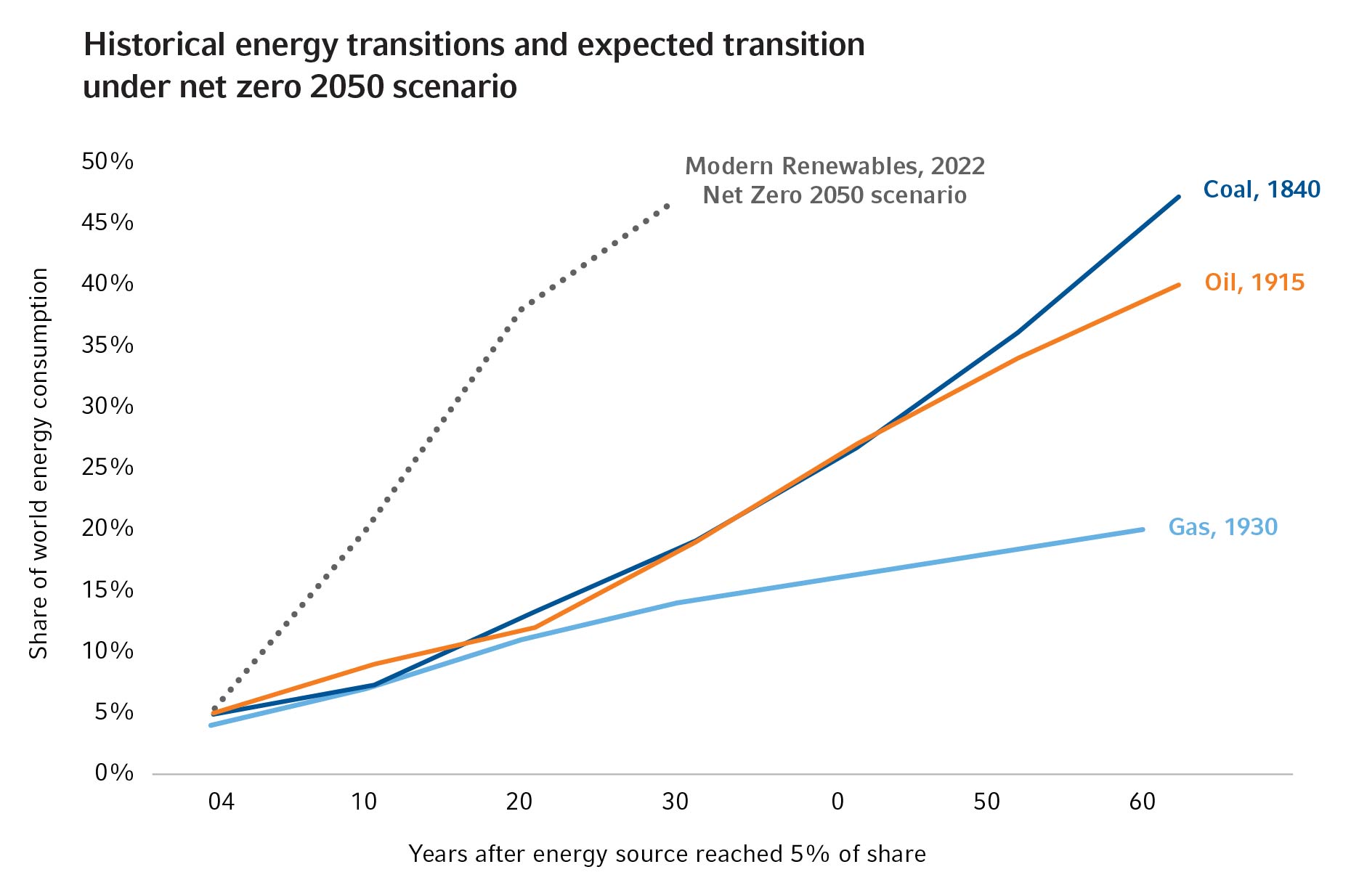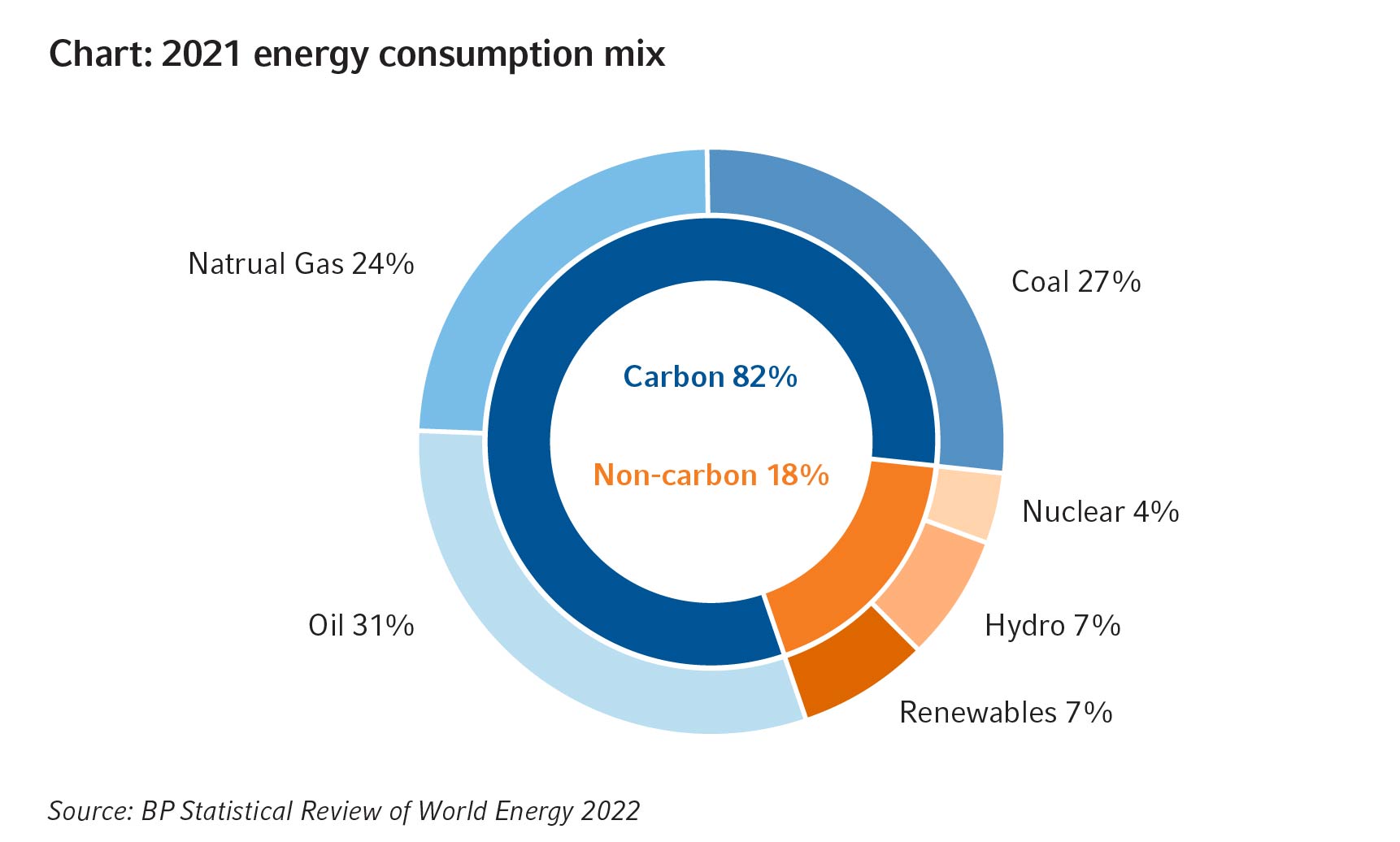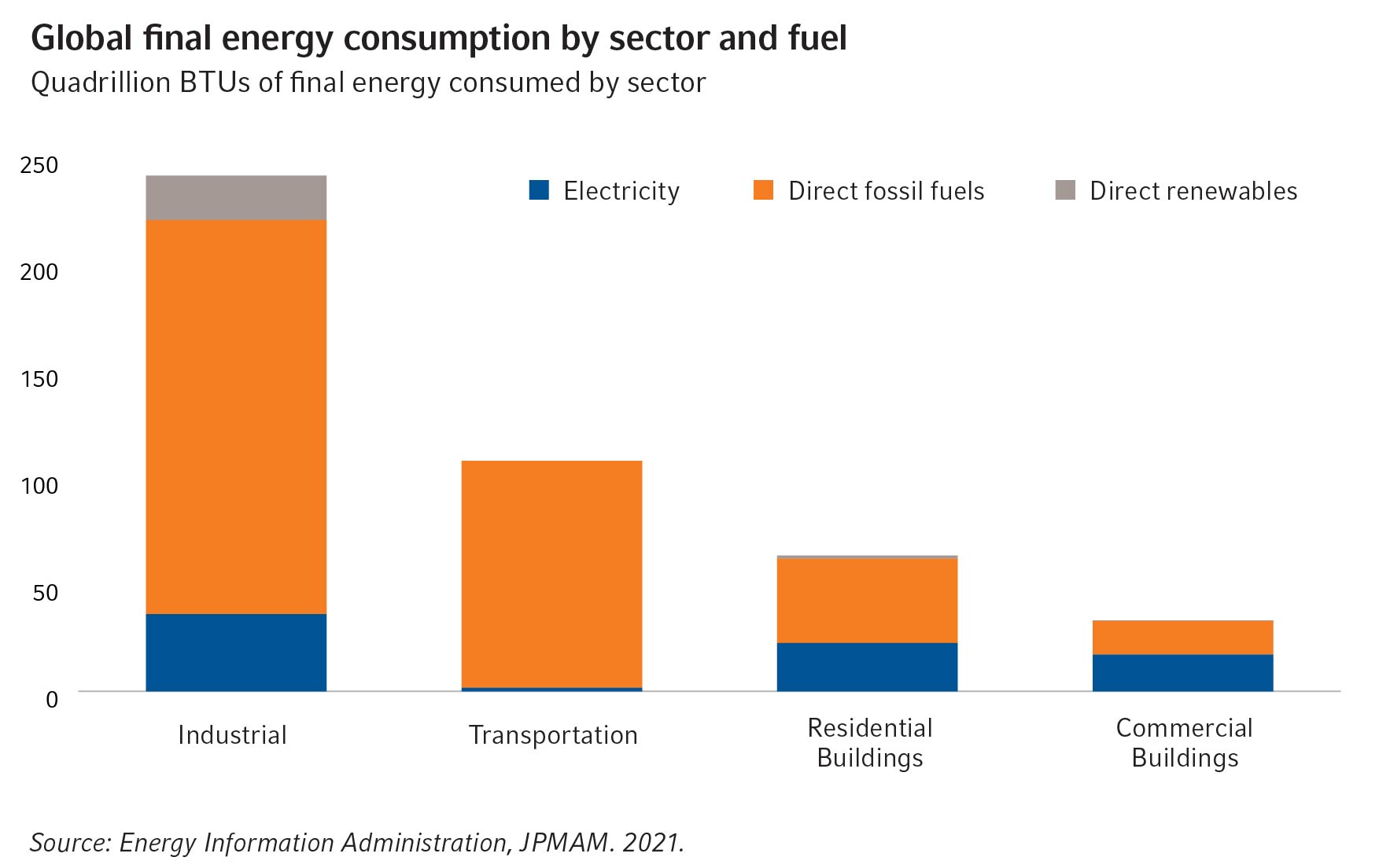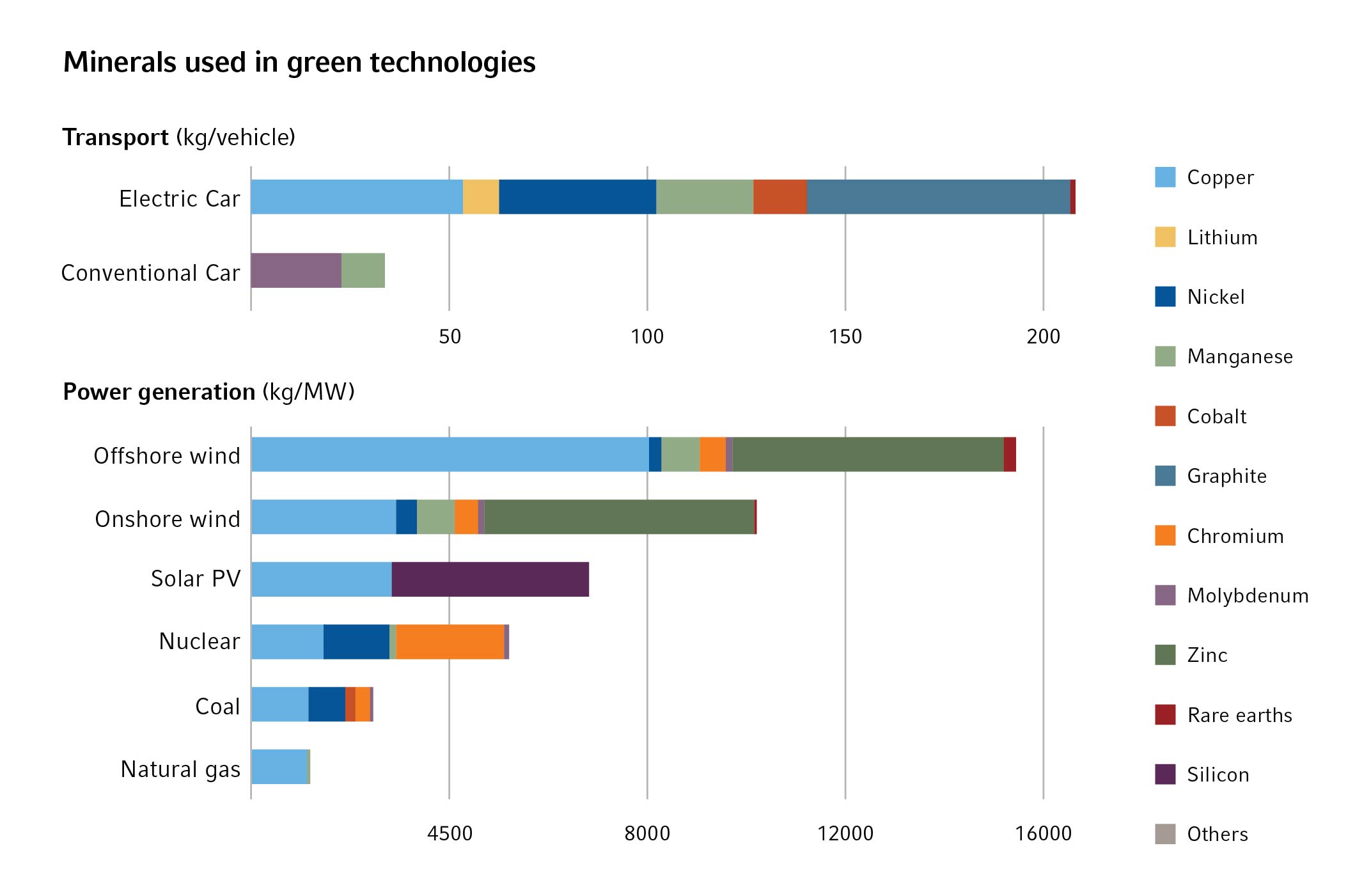The energy transition, Part 2: The transition challenge
Executive summary:
- Fossil fuels, particularly oil, are difficult to replace due to their availability, affordability and energy density. Low-carbon alternatives, like solar energy, need large amounts of space to produce comparable amounts of energy to oil.
- A considerable gap currently exists between the world’s present capabilities and what is needed to fully transition away from a fossil-fuel-based economy.
- The energy transition is not simply an engineering challenge but rather a monumental task that requires the convergence of technological innovation, bold strategic policy and deep coordination.
In our previous article in this three-part series, we examined the economic and social risks that could arise due to the globe’s reliance on fossil fuels, as well as possible interventions to curb the impacts, including an energy transition.
However, transitioning away from fossil fuels toward more sustainable and renewable sources will bring its own challenges.
Fossil fuels remain the backbone of world economic growth and industrial development despite the increasing prominence of green technology and renewable energy. In addition to our energy supply, fossil fuels are used to produce a range of everyday items from smartphones to non-stick cookware and synthetic fabrics.
The struggle to overcome oil dependency
A first challenge is that fossil fuels, particularly oil, are difficult to replace, as they are:
- Readily available – thanks to vast, proven oil reserves
- Affordable – due to technological advances and economies of scale
- Energy dense (with a large amount of energy stored per unit of volume) – allowing for efficient storage and transportation, which is especially important in sectors such as aviation and long-haul trucking.
Low-carbon alternatives, like solar energy, need large amounts of space to produce comparable amounts of energy to oil. Cities, for example, would require massive infrastructure investments to accommodate the disparity between concentrated population patterns and dispersed low-carbon electricity-generating systems.
Another challenge is that an energy transition is not as simple as decarbonising electricity generation through the adoption of renewable power. Electricity only accounts for 20%-30% of total energy consumption. To truly make a difference, we must find ways to substitute fossil fuels with renewable or synthetic alternatives in various industries and sectors worldwide.
(Click image to enlarge)
The need for speed
Energy transitions are complex and slow processes that historically have taken decades or even centuries to unfold. Even the transition to oil, with its remarkable properties, took a long time to account for nearly 40% of the world’s energy supply. Meanwhile, natural gas has only reached 20% of the world’s energy supply after 60 years.
What’s more, the energy transition required today is unlike any previous one. For the first time, the driving force behind this change is not economic efficiency but the urgent need to address climate change and its long-term impacts on the planet. And the transition needs to happen quickly. For example, the Net Zero 2050 climate scenario from Network for Greening the Financial System (NGFS) implies that in 30 years, nearly 50% of energy will come from renewable sources like solar and wind.
(Click image to enlarge)

Challenges of renewable energy
Despite significant advancements in renewable energy technology, a considerable gap exists between our present capabilities and what is needed. These include:
- Fit for purpose – Renewable energy sources often prove inadequate in applications where energy density is vital, such as transportation. Similarly, industries like steel and cement, characterised by carbon-intensive processes, grapple with the challenge of reducing their carbon footprint without overhauling established production processes.
- Continuity of supply – Renewable energy supply is intermittent as the sun and wind are not constant. This means robust energy storage solutions are essential for maintaining a reliable electricity supply. Battery technology and grid-scale storage systems need to improve dramatically, while smart grid technologies – featuring advanced sensors, communication systems, and data analytics – are needed to optimise energy resource management and enhance grid efficiency.
- Carbon capture, utilisation, and storage (CCUS) technologies – By mitigating emissions from hard-to-decarbonise sectors, CCUS can contribute to the broader climate change mitigation effort. However, considerable progress and innovation is needed to enhance the efficiency and cost-effectiveness of these technologies.
Supply chain challenges
As we transition away from fossil fuel-based systems, we will need to address production and supply chain issues.
Demand for materials used in green technologies will increase and complex supply networks will be needed to accommodate this shift. As such, it is crucial to develop more resilient and diversified supply chains for the minerals and materials vital to renewable energy production.
Production and supply chain obstacles to a rapid energy transition include:
- The tight supply of essential minerals for renewable energy production – For instance, palladium, a vital component in hydrogen fuel cells, is a key export of Russia, which accounted for approximately 40% of the global production in 2020. Geopolitical tensions and export restrictions can have a significant impact on the availability of such critical resources.
- Slow ramp-up times for new mines – For example, the last major copper mine, the Cobre Panamá mine, took nearly a decade to commence production after receiving approval. Copper is an essential metal for electric vehicles and renewable energy infrastructure.
- Increasingly complex geopolitics – As countries vie for access to scarce resources and seek to secure their supply chains, tensions and trade disputes may escalate and global power dynamics may shift.
International cooperation, investment in domestic production and support for advanced materials research will be key to minimising the environmental footprint of green technologies and ensuring a smooth energy transition.
The bottom line
The challenges to achieving an effective energy transition are non-trivial. Climate change is a complex problem that needs, but extends beyond, technological breakthroughs.
To foster public support and drive behavioral change, we need:
- Effective policy and regulatory frameworks
- Substantial infrastructure investments
- Public education and awareness campaigns.
Other essential components of a sustainable and equitable energy transition include:
- Clear renewable energy and emissions reduction targets
- Cross-border collaboration
- Financial backing for green projects
- Comprehensive education and training programs.
Great efforts are being made, but we need to acknowledge the complexities and challenges that lie ahead. The energy transition is not simply an engineering challenge but rather a monumental task that requires the convergence of technological innovation, bold strategic policy and deep coordination. And we need them sooner rather than later.
In our final article in this series, we will explore both a hot earth scenario and an energy transition scenario, including our observations for economies and markets.


